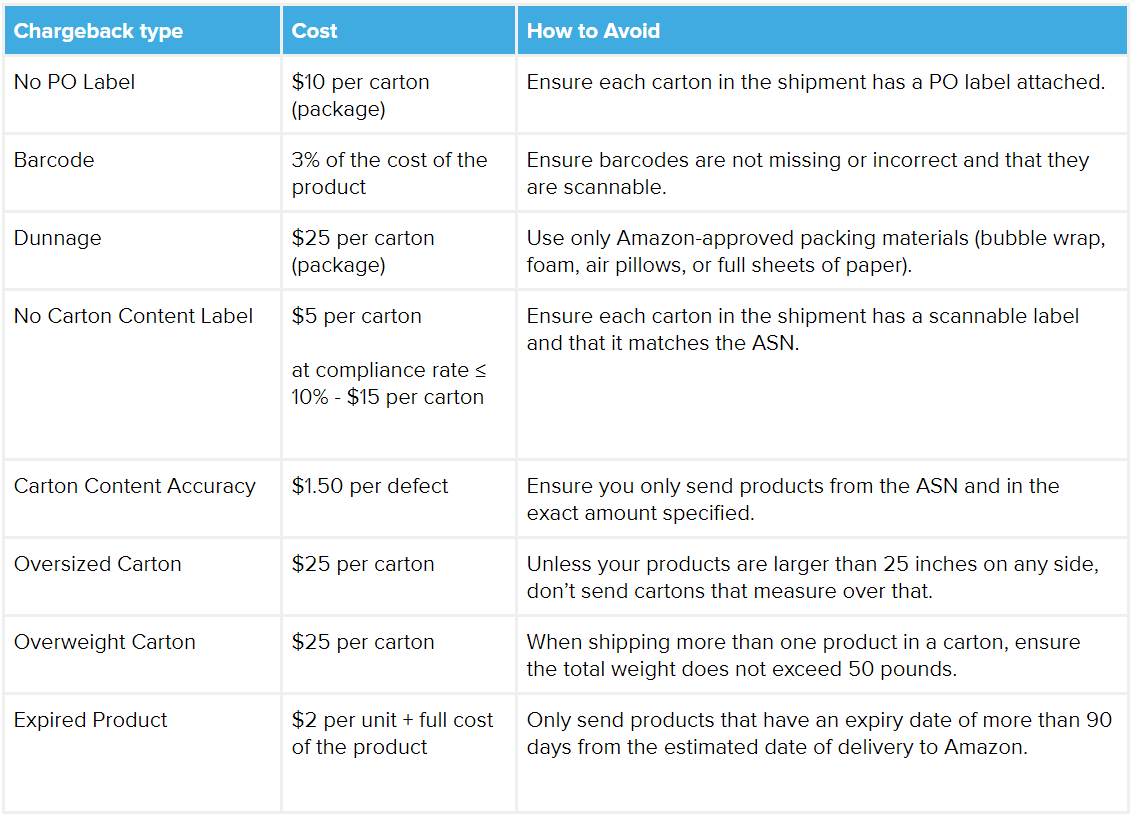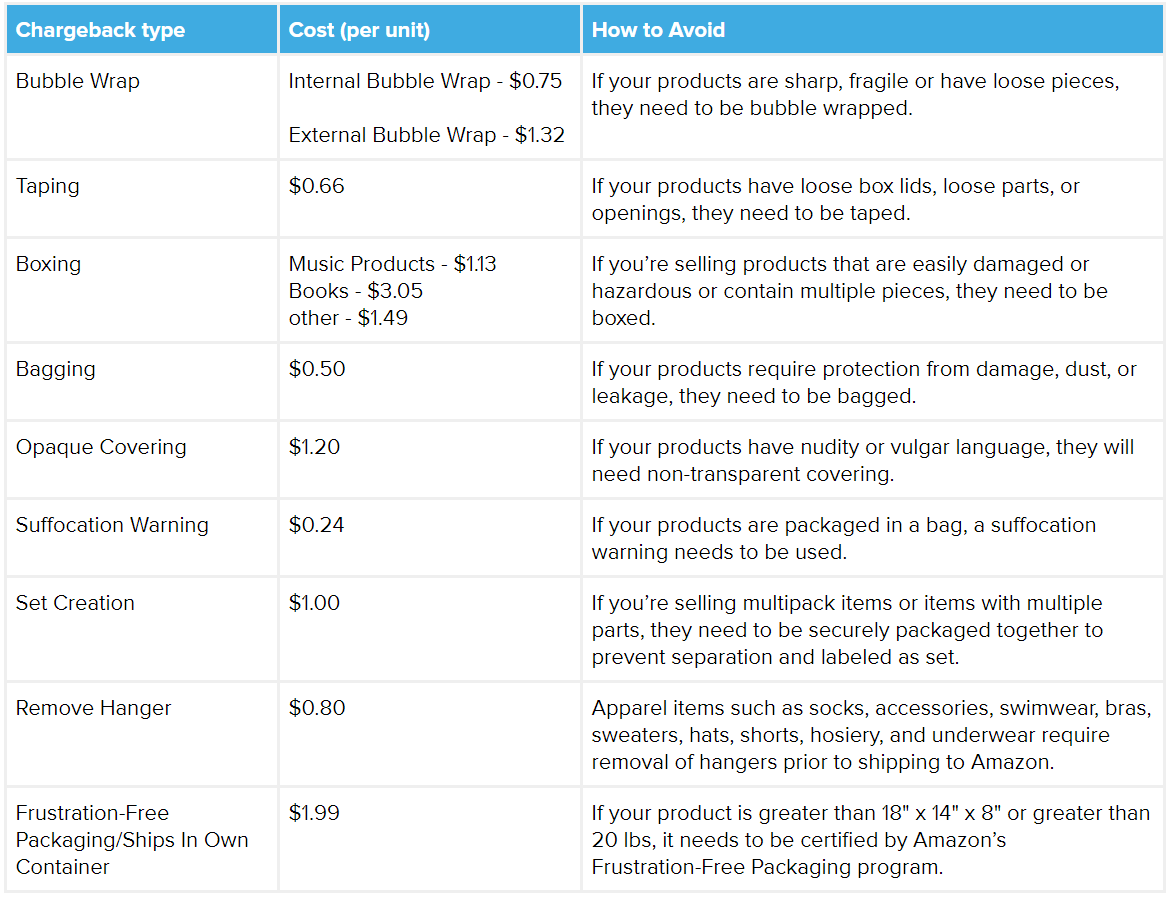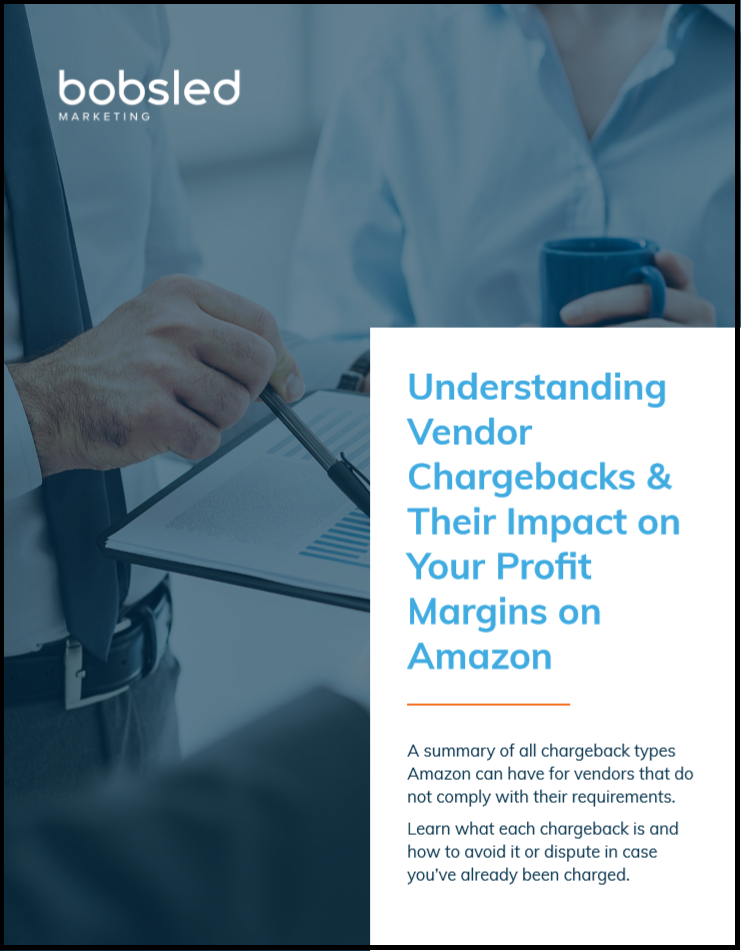Selling directly to Amazon through their Vendor Central platform is a coveted privilege for selected brands. However, working with Amazon is not an easy task, as vendors are expected to meet a lot of requirements.
Many of these requirements are operational in nature, and failing to comply results in additional cost to vendors.
These costs are called chargebacks.
And they are the silent killer of profit margins for many Vendor Central accounts on Amazon.
As a vendor, you need to know what types of chargebacks there are, what operational metrics they tie to, and how to prevent or dispute them. This could help you to avoid unnecessary charges and achieve healthier profits.
This knowledge can also help you understand existing chargebacks, dispute them, and get your money back from Amazon—or work on ways to prevent these from happening in the future.
To help, we’ve put together a comprehensive guide that covers everything vendors need to know about chargebacks and also provides nuggets of wisdom from our extensive experience managing brands, on Vendor Central.
DOWNLOAD THE FREE PDF GUIDE
Download the “Understanding Vendor Chargebacks – The Complete Guide“ PDF here to learn the different types of chargebacks, how you can avoid them, and how to dispute them with Amazon (even if you receive one in error!).
{{cta(‘a757ffd0-f338-4dd6-a47d-ecc441e2ac3f’,’justifyleft’)}}
Consider this blog post to be your Vendor Chargebacks 101—highlighting the different types of chargebacks, as well as tips and tricks you can employ to protect your account’s health and your profit margins.
Understanding Amazon Vendor Chargebacks
Knowing more about chargebacks will help you as a business owner to understand the impact they can have on your profit margins, and how maintaining good operational metrics increases your profits on Amazon.
The important thing to remember here is that you want to be extremely proactive and efficient with your chargebacks. Amazon is not going to reach out to you to resolve most of this, so if you don’t do anything, this is lost money.
Having knowledge of the different types of chargebacks that can be incurred by Amazon will help you with the issues that you may be having with your shipments.
Advance Shipment Notification (ASN) Chargebacks
What are they?
An ASN is a means of communicating shipment content and carrier tracking between vendors and Amazon.
ASN chargebacks will appear in your account when there’s missing or incorrect information in the Advance Shipment Notification, or when Amazon doesn’t receive an ASN before receiving your shipment at a fulfillment center.
The amount of this chargeback varies from 1 to 6% of product cost, depending on the specific ASN issue and your compliance rate (the lower the rate, the higher the fee is.)

Above: A screen shot of ASN Accuracy chargeback from chargebacks page in Vendor Central
How to avoid them
If you think that avoiding this chargeback is easier said than done, you’re right on the money (no pun intended). You need to make sure Amazon receives what’s stated in the ASN and that all information in the ASN matches the actual shipment.
There are many details that can be missed, though.
Once a shipment has been prepared, vendors need to double-check that the number of units in the shipment reflects what’s on the ASN and that all tracking numbers match up (ARN – Amazon Reference Number, PRO – Progressive tracking number, and BOL – Bill of Lading).
If you’re selling products that have an expiration date, this information must be included as well.
Finally, after the carrier picks up the shipment, it is the vendor’s obligation to submit the ASN so Amazon is informed of the incoming shipment, before it checks in at their warehouse.
Receive Process Chargebacks
What are they?
After your shipment has been picked up by the carrier and delivered to an Amazon warehouse, it’s time for the second performance test: Amazon warehouse processing.
If, for any reason, this process is not as smooth (automated) as Amazon expects, vendors are bound to get chargebacks.
How to avoid them
There are many subtypes of this chargeback, so the table below contains the most relevant info:

Purchase Orders (PO) Chargebacks
Amazon issues PO chargebacks when vendors do not comply with what was stated in the purchase orders Amazon sent.
Amazon expects that vendors only ship what was agreed upon, in the exact amount stated, and within the time frame specified.
There are three types of PO chargebacks:
- Overage PO Units
- Unconfirmed PO Units
- PO On-Time Accuracy
Learn more about fee reimbursements on Amazon…listen here.
Overage PO Units Chargebacks
What are they?
This type of PO chargeback will happen if a vendor sends more units than what was confirmed in a PO. The chargeback amount is tiered based on the overage percentage:
- 10% of product cost for overage up to 40%
- 50% of product cost for overage of 41-90%
- 80% of product cost for overage above 91%
*Baby, Health and Personal Care, Apparel, Beauty, Shoes, Luggage, Grocery, Pantry, or Luxury Beauty products will have fee at 30% of product cost with overage up to 40%.
* Amazon Fresh products will always be charged the full cost of product for any overage units.
How to avoid them
In order to prevent this chargeback, vendors need to double-check that the prepared shipments match the quantities that were confirmed in the initial POs.
Unconfirmed PO Units Chargebacks
What are they?
This one is simple. Unconfirmed PO units chargebacks happen when vendors send products to Amazon that were never confirmed on a PO.
The amount for this chargeback is 10% of the cost of the product.
How to avoid them
Preventing this chargeback is all about ensuring your shipments only contain products and quantities confirmed in the PO.
PO On-Time Accuracy Chargebacks
What are they?
PO On-Time Accuracy chargebacks will happen when your confirmed products fail to arrive at Amazon within the purchase order window.
For prepaid shipping, this metric is measured based on the Carrier Requested Delivery Date (CRDD) and by the Freight Ready Date (FRD) for Collect shipping.
Amazon will waive this chargeback if your trailing four weeks have an average on-time rate greater than 90%. If that’s not the case, Amazon will charge you 3% of the cost of the product if your shipment is not on time or if you reduce the number of confirmed units five days after the start of the ship/delivery window.
If vendors fail to deliver a shipment by the PO cancellation date, Amazon will charge 10% of the cost of the product.
How to avoid them
In order to meet Amazon’s on-time requirements, vendors need to focus on two things:
- First, the warehouse team needs to have enough time to prepare shipments when POs come in (normally on Mondays).
- Second, inventory levels need to be checked before confirming purchase order items.

Above: A screen shot taken from a confirmed purchase order showing the product that was ordered with submitted and accepted quantities
Preparation Chargebacks
What are they?
Preparation chargebacks tie to issues with vendors not being able to prep and pack products according to Amazon’s requirements when shipping to its warehouses. Depending on the product you’re selling to Amazon, you will be required to bag, bubble wrap, or tape your product.
How to avoid them
Prep requirements on certain products should avoid damage during transportation. Here’s an overview of all prep chargebacks vendors need to be aware of:

Transportation Chargebacks
The least frequent chargebacks vendors face are those related to transportation issues, but there are a few types that are important for you to know about.
Pickup Accuracy Chargebacks
What are they?
Pickup Accuracy chargebacks will happen if you don’t provide freight when the carrier arrives to collect or when your collect shipments miss the scheduled pickup date.
The good news for vendors is that Amazon does not charge any fees if these issues happen … an Amazon rarity!
However, it is in both Amazon’s and vendors’ interest to ship inventory as scheduled, because delays with inventory arrival can have a negative impact on sales when products go out of stock.
How to avoid them
In order to avoid these issues, vendors need to have their shipments ready at 8 a.m. on pickup day and ensure that a correct freight ready date is entered in the routing request.
When an email of the planned pickup date is sent to vendors, use the reply all option to inform everyone involved in the process that your shipment is either ready or that you need to reschedule.
No Show Chargebacks
What are they?
No Show chargebacks happen when the carrier doesn’t show up at Amazon’s warehouse within the agreed delivery slot and either carrier or the vendor fails to notify Amazon in advance about cancellation or rescheduling.
How to avoid them
This chargeback will only happen for prepaid shipments. In order to avoid these issues, make sure your carrier follows the given schedule, and if they’re not able to, ensure they inform Amazon about it and reschedule.
Vendors that use a collect shipment method and preferred Amazon carriers are not impacted by this chargeback.
Transportation Chargebacks – Import Vendors Only
What are they?
There are three more transportation chargeback subtypes that only apply to import vendors:
- Import PO On-Time Non Compliance: happens when your shipment delivery date is outside the shipping window.
- Import shipment late booking: happens when import vendors fail to make a booking with Amazon 13 days before the earliest vendor ship date stated in the purchase order.
- Import documents late delivery: happens when you don’t deliver the trade documents by the estimated vessel departure date.
How to avoid them
In order to avoid any of these three chargebacks, vendors need to complete the related tasks within the timeframe specified by Amazon.
For the first two chargebacks, Amazon will charge a fee of 3% of the cost of the product. For the last one, Amazon will charge a nifty $150 fee per document if you’re late one to three days. Every day after the third is an additional $50 per document.
Direct Fulfillment Chargebacks
Last but not least on our list of chargeback groups are chargebacks that only apply to vendors that use direct fulfillment method (shipping orders directly to the end customer through their Vendor Central account and not sending the product to an Amazon warehouse).
Cancellation Rate Chargebacks
What are they?
Cancellation rate chargebacks occur when vendors deny incoming orders or cancel those that have already been accepted.
How to avoid them
Each cancellation will cost vendors $10, so you’ll want to ensure to regularly update your product availability in order to avoid customer orders for products that cannot be sent.
Ship Method Mismatch Chargebacks
What are they?
Ship method mismatch chargebacks occur when vendors use a different ship method or different carrier than what was specified in the order.
How to avoid them
Amazon will charge you $10 per issue, and the only way to avoid this chargeback is to follow each shipping instruction that comes with an order.
Best Practices, Tips, and Tricks for Amazon Vendor Chargebacks
Bobsled Marketing has been providing services to Amazon vendors for years, so we’ve been able to identify the most common mistakes they make when it comes to operational performance chargebacks.
Here are five things vendors can do to avoid or reduce the amount of their chargebacks.
Tip #1 – Keep Neat Documentation for Each Shipment
Often times, vendors are charged fees for mistakes they didn’t make.
In order to dispute this, proper documentation is needed.
It is also important to have an organized way of keeping this documentation in one place.
This can be as simple as having a shared folder dated on PO arrival and accessible to all team members involved in PO processing. From there, each team member can upload the documentation they collected such as BOLs, ASN, photos of the shipment, carrier documents, and so on.
Having all of these available, and in one place, will increase your chances to properly dispute Amazon chargebacks if and when they come. The documentation you collect will also be useful when reviewing your own work or trying to find data on an older shipment.
Tip #2 – Track Chargebacks on a Weekly Basis
Amazon only gives 30 days for vendors to dispute chargebacks, so it’s very important to catch new chargebacks as they come in.
When vendors have a time scheduled to check new chargebacks on a weekly basis, they’re ensuring no chargebacks go without notice, and they’re not being charged without an opportunity to dispute and get reimbursed.
Checking the chargeback page takes 1-2 minutes and can help with your profit margins significantly when you spot chargebacks that can be disputed. Schedule a recurring appointment right into your calendar to make sure you make time for this to happen.
Tip #3 – Learn From Your Mistakes
This one might seem obvious, but it is often overlooked when it comes to vendor chargebacks.
Depending on the amount of chargebacks vendors receive on a monthly basis, it is recommended to do a monthly or quarterly analysis of all chargebacks received and identify patterns.
Based on chargeback reports, vendors can be proactive and work on possible improvements in their shipment processes to avoid future issues entirely.
Tip # 4 – Have an Amazon Person on Your Team
While multiple team members will be working on Amazon purchase orders to complete tasks such as processing, packing, fulfillment, shipping, etc., it is strongly recommended that you have one person who oversees all of these tasks.
People from different departments normally work on only their portion of Amazon’s order, and this can result in unsynced data at the end. Unsynced data in a PO translates to chargebacks and paying needless fees to Amazon.
Having a designated person on the team to do an overall check will help vendors avoid many issues with Amazon.
It will also save time in the long run, because vendors will reduce the amount of revisions that need to be done if and when things go wrong.
Tip #5 – Dispute Multiple Chargebacks at Once
This is a neat little hack that can save a lot of time: Chargebacks that are of the same type and within the same PO can be selected and disputed all at once.
Instead of selecting each chargeback individually, writing about your claim, and uploading relevant documentation, you can do this only once for all related chargebacks.
Before hitting the dispute button, ensure you’ve marked all checkboxes next to chargebacks that relate to the same issue in a specific PO.
Solving Your Chargeback Issues Is Both Possible and Important
The world of Amazon is complex, and their requirements for vendors are many. Dealing with chargebacks that come as a result of operational noncompliance is not an easy task (otherwise, this article would have been much shorter!).
But it’s not impossible.
Vendors just need to have a strategic and proactive approach when it comes to identifying issues at their core, and work internally to find solutions.
Analyzing the whole process, from PO receipt to shipment delivery, and tweaking some of the steps as I showed you in this article can go a long way.
Bobsled Marketing has helped many vendors be more profitable on Amazon by fixing their operational issues and disputing chargebacks. You can download our more comprehensive guide to Understanding Amazon Vendor Chargebacks and Their Impact on Your Profit Margins if you would like to take care of this yourself; or if you would prefer some expert help, contact us today.
{{cta(‘54235dcc-16a0-457e-b1e8-40e85465cbff’,’justifycenter’)}}


